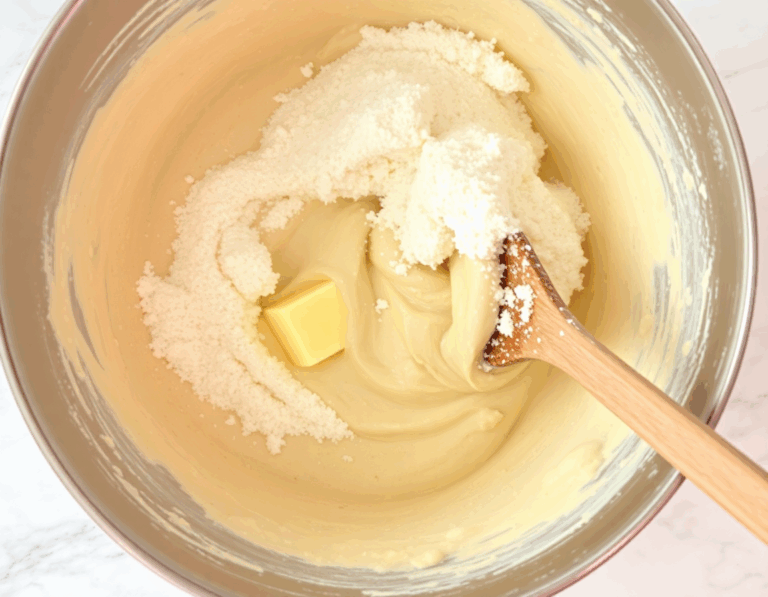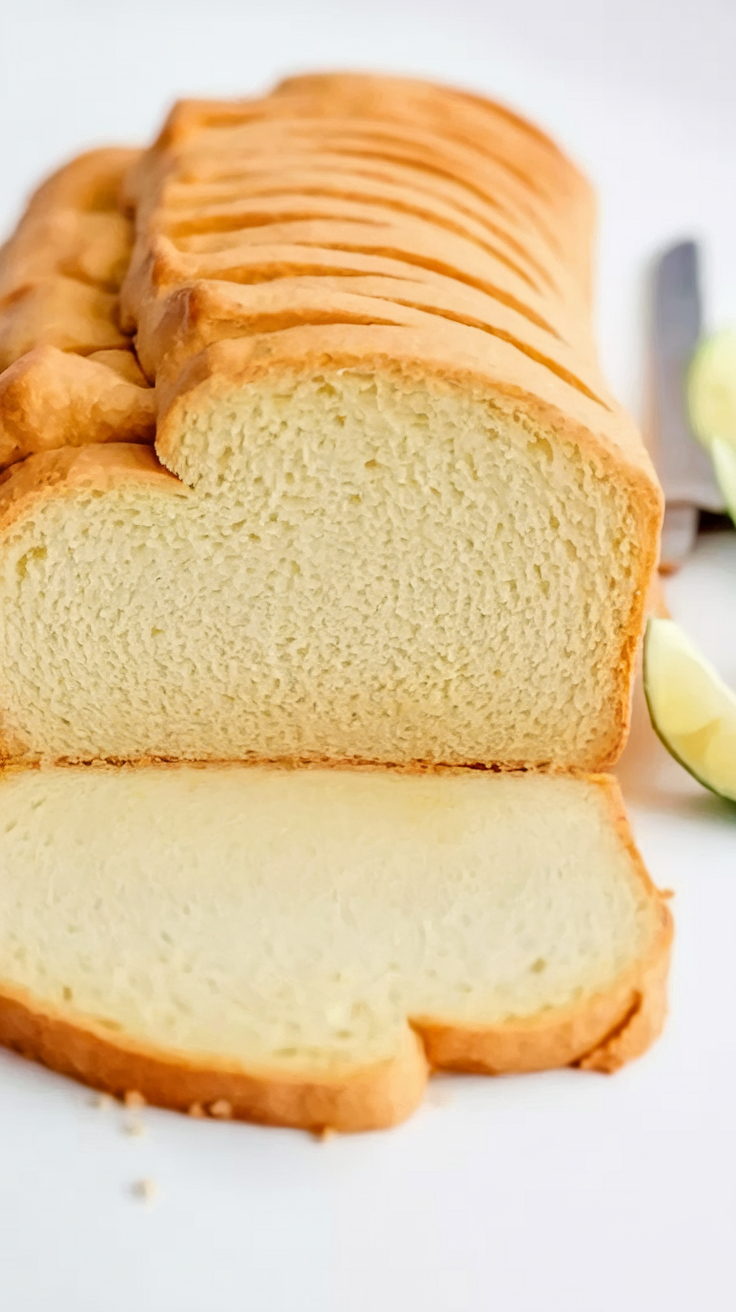Oh, the joy of bread! There’s something magical about the aroma of freshly baked bread wafting through the kitchen—it’s like a warm hug wrapped in doughy goodness. And when it’s a keto low-carb version made with coconut flour, I can’t help but feel a mix of excitement and nostalgia, like stumbling upon an old song on the radio that you didn’t know you missed. Whether you’re a keto enthusiast or just curious, this recipe is a delightful twist on a classic staple!
Steps
- Preheat your oven to 180°C (355°F). Prepare your workspace by cracking seven large eggs into a bowl, whisking them for about a minute until they are well mixed.
- Add 1/2 cup of coconut flour, 1/2 cup of butter (or olive/coconut oil for a dairy-free option), 1/4 teaspoon of salt, 1/4 teaspoon of baking powder, and 1/2 teaspoon of xanthan gum to the eggs. Stir the mixture thoroughly until it becomes thick and fully combined.
- Line an 8.5 x 5-inch loaf tin with parchment paper. Pour the batter into the tin, smoothing the top with a spatula to ensure it’s even.
- Place the tin in the oven and bake for 50 minutes, checking with a skewer to ensure it comes out clean from the center. Once done, remove the bread and allow it to cool.
- Slice the bread and store it in the fridge for up to five days, or freeze for up to two weeks. This bread is excellent for toasting and can easily be stored for later use.

Ingredients
- 7 large eggs
- 1/2 cup coconut flour
- 1/2 cup butter (120g / 4 oz) or use 1/2 cup olive/coconut oil for a dairy-free option
- 1/4 teaspoon salt
- 1/4 teaspoon baking powder (preferably aluminium-free)
- 1/2 teaspoon xanthan gum (optional)
Nutritional Values
Calories: 1520 kcal | Fat: 144g | Saturated Fat: 80g | Polyunsaturated Fat: 3.2g | Monounsaturated Fat: 32g | Cholesterol: 1552mg | Sodium: 1872mg | Potassium: 512mg | Carbohydrates: 32g | Fiber: 16g | Sugar: 3.2g | Protein: 48g | Vitamin A: 4800IU | Calcium: 160mg | Iron: 11.2mg | Net Carbs: 16g
FAQ
- Can I substitute almond flour with coconut flour in recipes?
- Yes, you can replace almond flour with coconut flour, but it’s crucial to adjust the quantity due to coconut flour’s higher absorbency. Use a quarter of the amount of coconut flour for the same effect as almond flour. For example, if a recipe calls for 4 cups of almond flour, you would use 1 cup of coconut flour.
- How can I make the keto coconut bread dairy-free?
- To create a dairy-free version of this keto coconut bread, substitute the butter with olive oil. While coconut oil is another option, olive oil tends to offer a better flavor balance, especially since coconut flour is already a key ingredient.
- Why should I use aluminium-free baking powder in this recipe?
- Aluminium-free baking powder is recommended because regular baking powder can react with acidic ingredients like coconut, leading to a greenish tint and an unpleasant metallic taste. Although this does not affect the bread’s safety, it can alter its appearance and flavor.
- Where can I find xanthan gum for this recipe?
- Xanthan gum, which helps bind the bread, can typically be found in the baking aisle or gluten-free section of most supermarkets. It’s also available for purchase online.
- Is coconut considered a nut?
- Coconuts are technically classified as a “drupe,” not a nut. However, some individuals with nut allergies choose to avoid coconuts out of precaution.
Tips
- Use Aluminium-Free Baking Powder: Opt for aluminium-free baking powder to prevent any unexpected green discoloration in your bread. This happens when aluminium-based powders react with acidic ingredients like coconut, which can also result in a metallic taste.
- Dairy-Free Alternative: If you prefer a dairy-free version, substitute butter with olive oil. This maintains a good flavor balance, particularly since coconut flour is being used. Coconut oil is another option, but it might alter the taste more than olive oil.
- Coconut Flour Conversion: When substituting almond flour with coconut flour, remember that coconut flour is more absorbent. Use a quarter of the amount of coconut flour compared to almond flour to achieve the right consistency and texture.
- Xanthan Gum as a Binder: Adding xanthan gum helps bind the ingredients together, which aids in the bread’s rise and structure. It can usually be found in the baking or gluten-free section of your local supermarket.
Equipment
- 8.5 x 5-inch Loaf Tin – A specific size for baking the bread.
- Parchment Paper – For lining the loaf tin to prevent sticking.
- Aluminium-Free Baking Powder – A specific type of baking powder recommended for this recipe to avoid discoloration and taste issues.
- Xanthan Gum – An optional ingredient often used in gluten-free baking to help bind and add structure to the bread.

